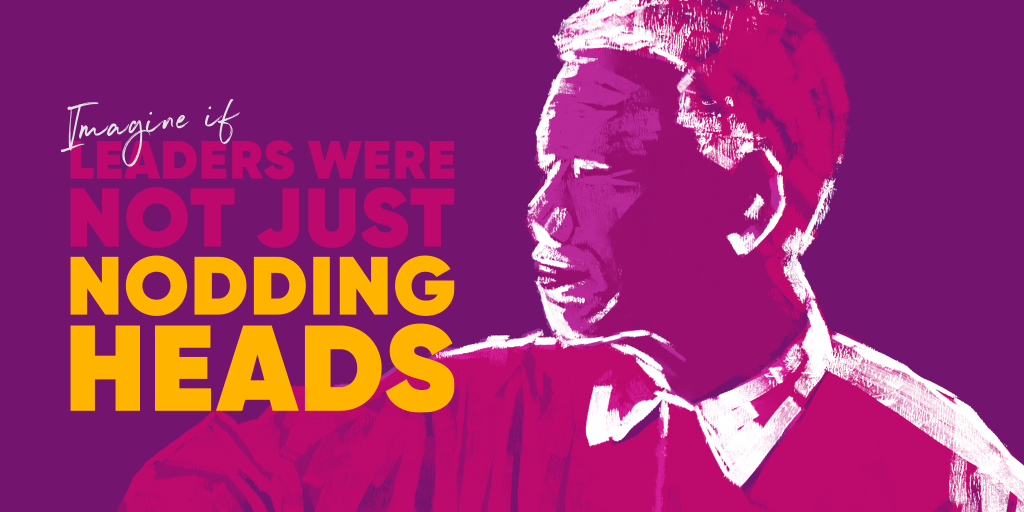Insight article

The power of storytelling in leadership
Leadership is an art as much as it is a science. While leadership theories, strategies, and skills are important, the ability to connect with and inspire others often separates good leaders from great ones. One potent tool that exceptional leaders have wielded throughout history is storytelling.
Nelson Mandela is a powerful example of how stories are not just for entertainment; they are a powerful means of communication that can inspire, influence, and impact people on a deep emotional level. He skillfully employed storytelling to unite a divided nation and inspire hope during South Africa’s tumultuous transition from apartheid to democracy. As a leader who challenged the status quo, he drew on personal anecdotes of resilience and forgiveness, often drawing from his 27 years of imprisonment, to connect with people on a deeply emotional level.
Mandela’s storytelling transcended mere words; it was a powerful tool for reconciliation, healing, and fostering a shared sense of purpose among South Africans of all backgrounds, even when as a leader in power, accepting those deep divisions could have been the accepted thing to do. As a South African, I personally witnessed and felt this connectedness, particularly during the Rugby World Cup which Mandela placed into the heart of his narrative as a common goal to unite all South Africans. Through his narratives, he not only conveyed the importance of forgiveness and reconciliation but also instilled in others the belief that change and progress were possible, even in the face of seemingly insurmountable challenges. So how is storytelling such a powerful tool for leaders in business?
Building connection
At the heart of effective leadership lies the ability to build strong connections with team members, colleagues, and followers. Storytelling helps leaders connect on a personal level by creating empathy, trust, and relatability. When a leader shares a personal story or one that resonates with the audience’s experiences, it humanises them. It shows vulnerability, making leaders more approachable and relatable. This connection fosters a sense of belonging, essential for a motivated and engaged team.
Conveying vision
Leadership is about more than just managing day-to-day operations; it’s about charting a course for the future. Storytelling is a dynamic tool for communicating a vision. When a leader tells a compelling story about the future, it provides a tangible, emotionally resonant picture of what could be. This vision motivates people to work toward a common goal and aligns their efforts with a shared purpose.
Transmitting values
Values are the bedrock of an organisation’s culture. Leaders who use storytelling to convey values make them come alive. Stories about past challenges, ethical dilemmas, or acts of courage can illustrate the values that guide the organisation. Such stories serve as moral compasses for the team, helping them navigate complex decisions in alignment with the organisation’s core principles.
Overcoming resistance
In any leadership role, there will be resistance and obstacles to overcome. Storytelling can be a potent tool for addressing these challenges. When leaders share stories of how they or others faced adversity and triumphed, it provides hope, resilience, and inspiration. These stories remind team members that setbacks are part of the journey and can be opportunities for growth.
Making complex concepts digestible
Leaders often need to communicate complex ideas, strategies, or data. Storytelling simplifies the complex by putting it into a relatable context. Analogies, metaphors, and narratives can transform intricate concepts into something accessible and memorable. A well-told story can make a dry presentation engaging and a complex strategy comprehensible.
Fostering innovation
Innovation often thrives in environments that encourage risk-taking and experimentation. When leaders share stories of both successes and failures, it creates a culture where taking calculated risks is not just acceptable but encouraged. These stories illustrate that innovation and growth come from pushing boundaries, learning from mistakes, and embracing change.
Inspiring action
Ultimately, leadership is about inspiring action. Storytelling has the power to move people to action like no other form of communication. When leaders tell stories that tap into emotions, they ignite passion, enthusiasm, and a sense of purpose. People are more likely to commit to a cause or project when they are emotionally invested in it.
In the world of leadership, storytelling is a superpower. It forges connections, conveys visions, transmits values, overcomes resistance, simplifies complexity, fosters innovation, and inspires action. Leaders who harness the power of storytelling become not just managers but inspirers, motivators, and visionaries. They create a culture where people are not just employees but collaborators on a shared journey. As you strive to become a more effective leader, remember the transformative potential of storytelling and make it an integral part of your leadership toolkit. Story by story, you can inspire, influence, and impact the world around you.
Reimagining leadership – imagine what could be achieved if your leaders were storytellers…




